





Schools
Western expansion sparked a
movement to establish public schools throughout the West. Advocates hoped
public schooling would transform what they perceived as an alarmingly diverse population
into a nation of good citizens.
The role of religion quickly
posed dilemmas. If schools were to create moral citizens, many expected
religion to play a part. But whose religion?
Most advocates for public
schools were Protestants. Should their preferences dominate? Should public
schools be allowed to favor one religion over another? Could parents be taxed
to pay for schools they didn’t want their children to attend?
Arguments over school
funding, curricula, school choice, and other issues divided communities, the
press, the courts, and every level of government. Many of the country’s most
rancorous debates about religious liberty and the place of religion in public
life revolved around schooling.
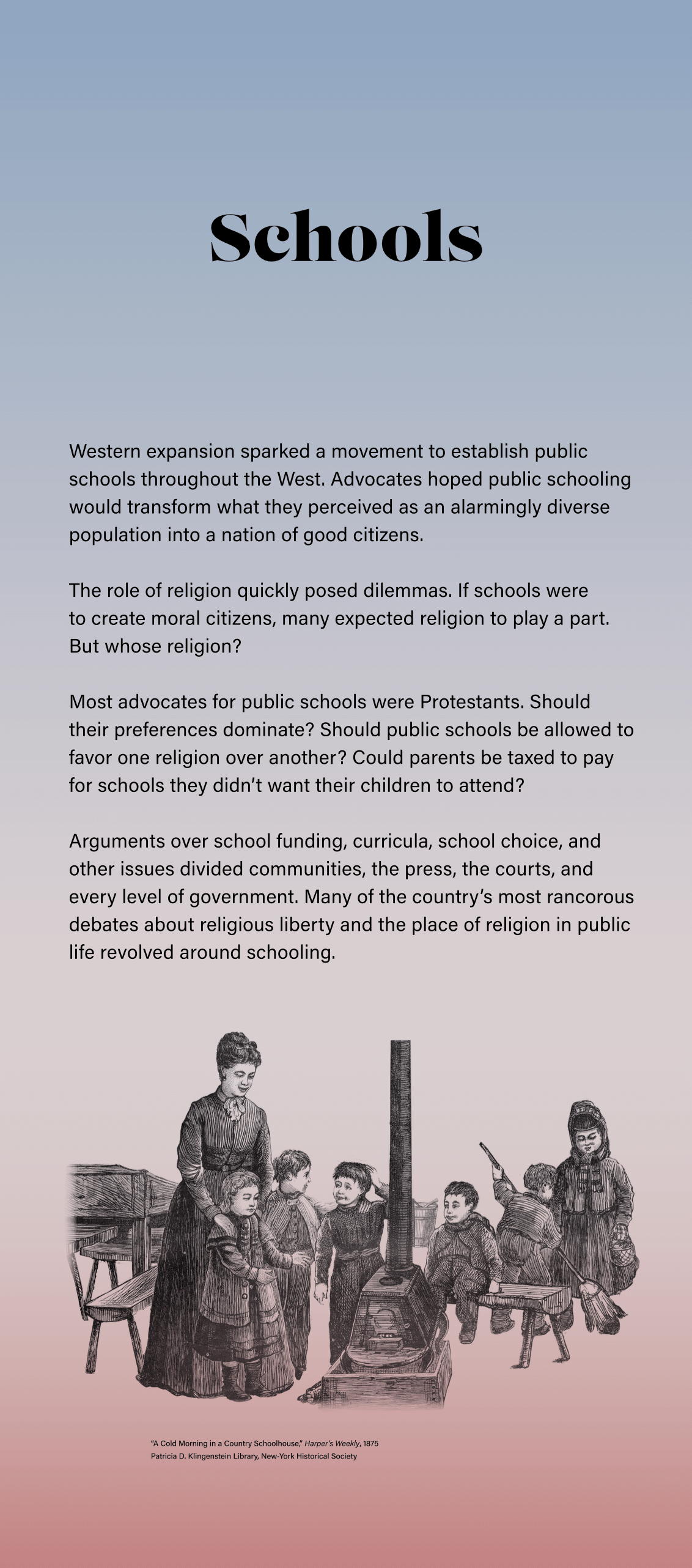
“A Cold Morning in a Country
Schoolhouse,” Harper’s Weekly, 1875
Patricia D. Klingenstein Library, New-York Historical
Society
Civics
Separation of Church and State
Ten years after the Civil
War, President Grant spoke to veterans he once commanded in the Union’s Army of
the Tennessee. Of what did he speak? Religion in the schools! Grant told his
listeners that the future of their nation depended on public education free of
religious bias.
“Afford
to every child growing up in the land the opportunity of a good common school
education, unmixed with sectarian, pagan or atheistical tenets. Leave the
matter of religion to the family circle, the church, and the private school
supported entirely by private contribution. Keep the church and state forever
separate.”
Grant sought to spur a
nationwide system of public schools. He wanted to keep the schools
non-sectarian—unaffiliated with a particular religion or theology—because Protestant
voters worried about the spread of Catholic and Mormon teachings in the West.
The President’s critics countered that, in practice, his “non-sectarian”
schools were biased toward Protestantism.
Geography Lessons
“Dissected maps” were early
forms of jigsaw puzzles designed to make learning fun. This one is a map of the
United States in 1887, a dozen years after the president's Des Moines speech.
The nation's political geography was still in formation, but the image on this
puzzle cover conveys confidence in the outcome.
The female “teacher”
represents Columbia—the personification of American liberty—who tutors an
Indigenous pupil. At the time, Americans would have understood the image as a
metaphor for civilizing and Christianizing the continent.
McLoughlin Brothers
A New
Dissected Map of the United States, ca. 1887
New-York Historical Society, The Liman Collection,
2000.547
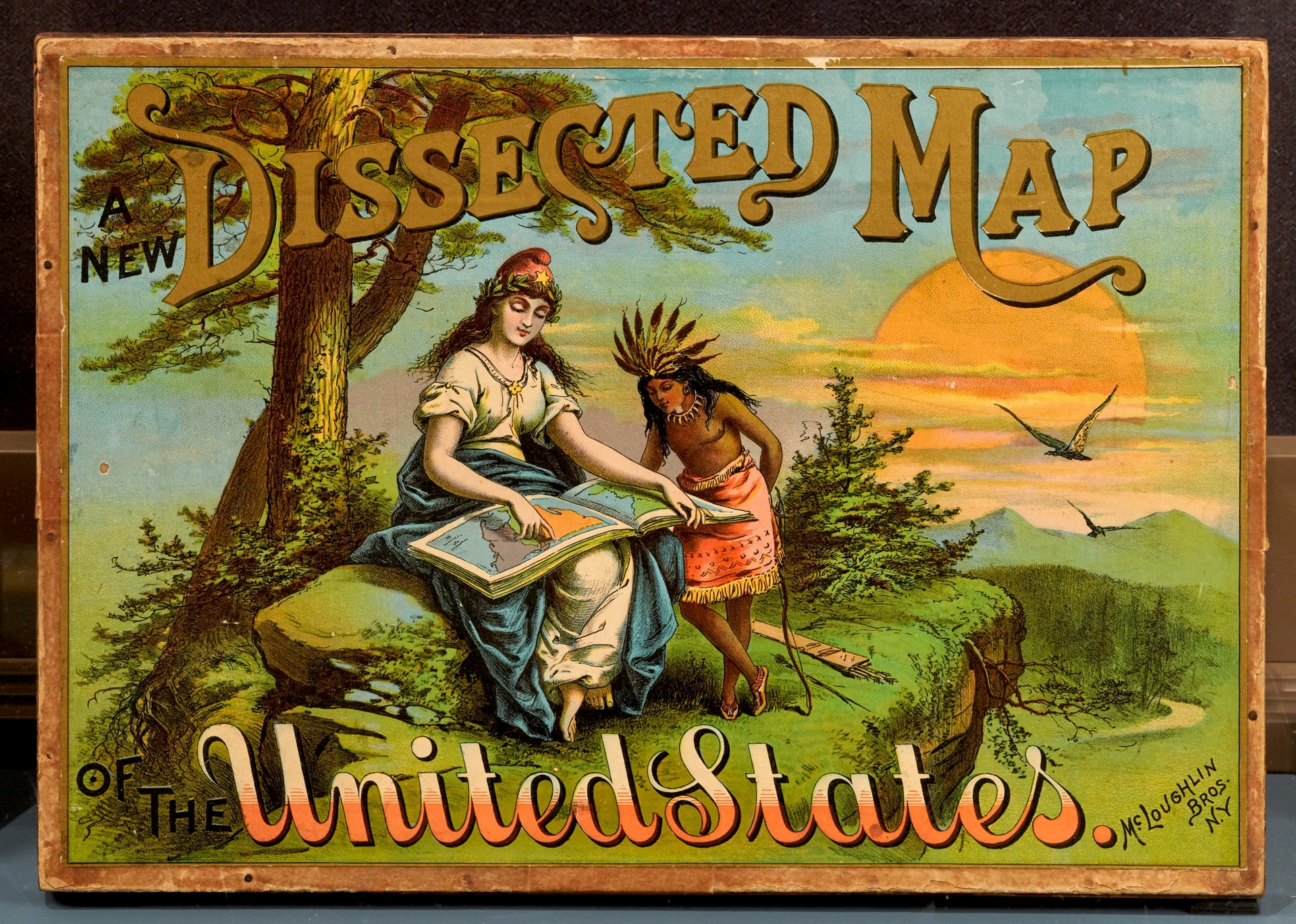
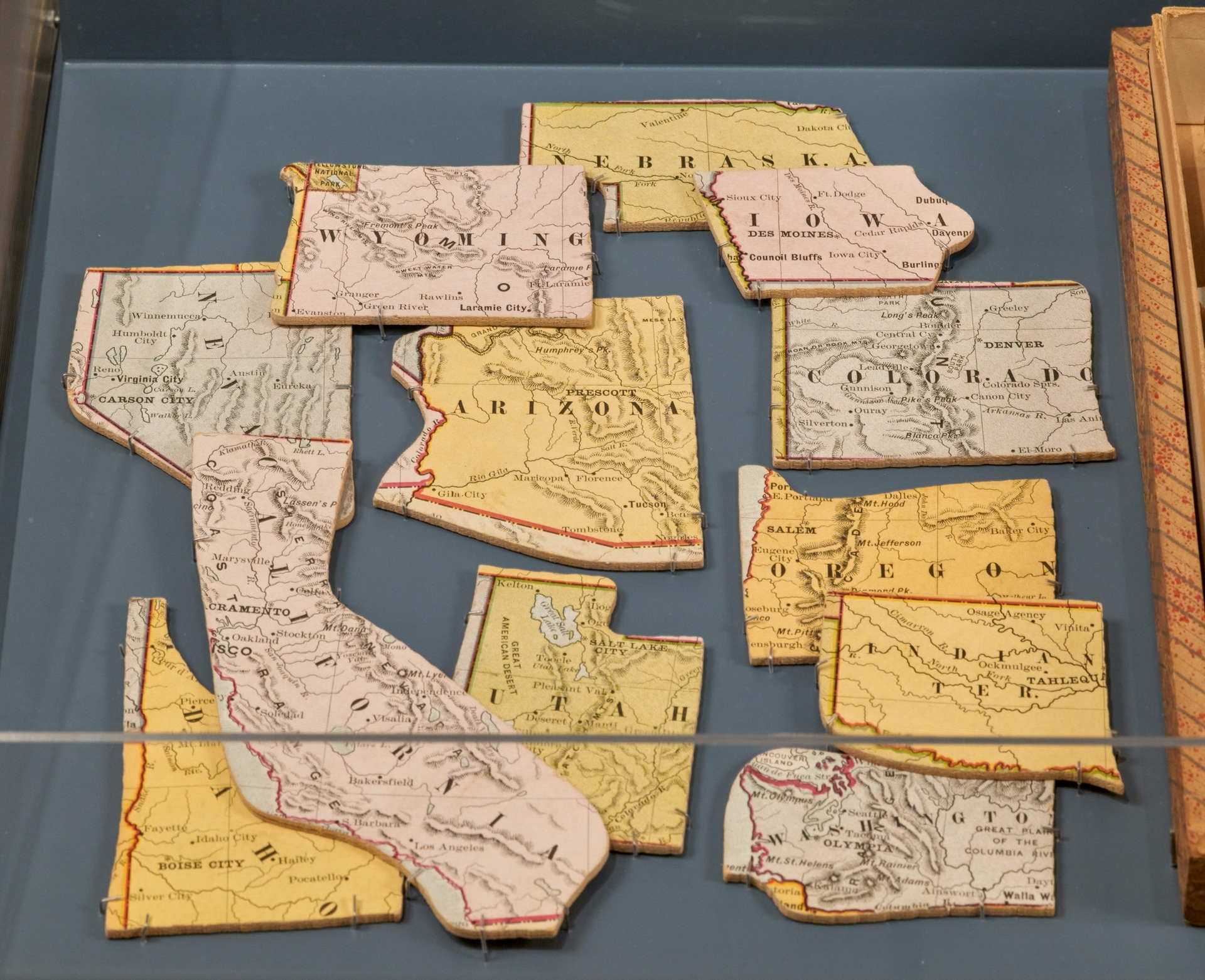
Arithmetic
School Funding
With the Northwest Ordinance (1787), the
Continental Congress created a
system for opening schools west of the Appalachian Mountains. Land recently
taken from Native nations was divided into townships with plots sold to white
settlers. A portion of each township was dedicated to supporting new schools.
Public lands and funds
continued to support western schools as the nation grew. Instruction in these
classrooms often reflected a Protestant bent, even while the responsible
parties imagined them as religiously neutral, or non-sectarian. These school
leaders thus believed the lessons were suitable for a religiously diverse
student body.
One school superintendent expressed
this point of view in his clearly Protestant book of lessons. “There is no
better place to teach reverence for the God of heaven than the school-room,” he
wrote. “It can be done without inculcating sectarian dogmas or trampling upon
the rights of conscience.”
Non-Protestants, particularly
Catholics, sought to change this status quo. They argued for their own portions
of the school fund and against paying taxes for schools whose teachings they
disagreed with.
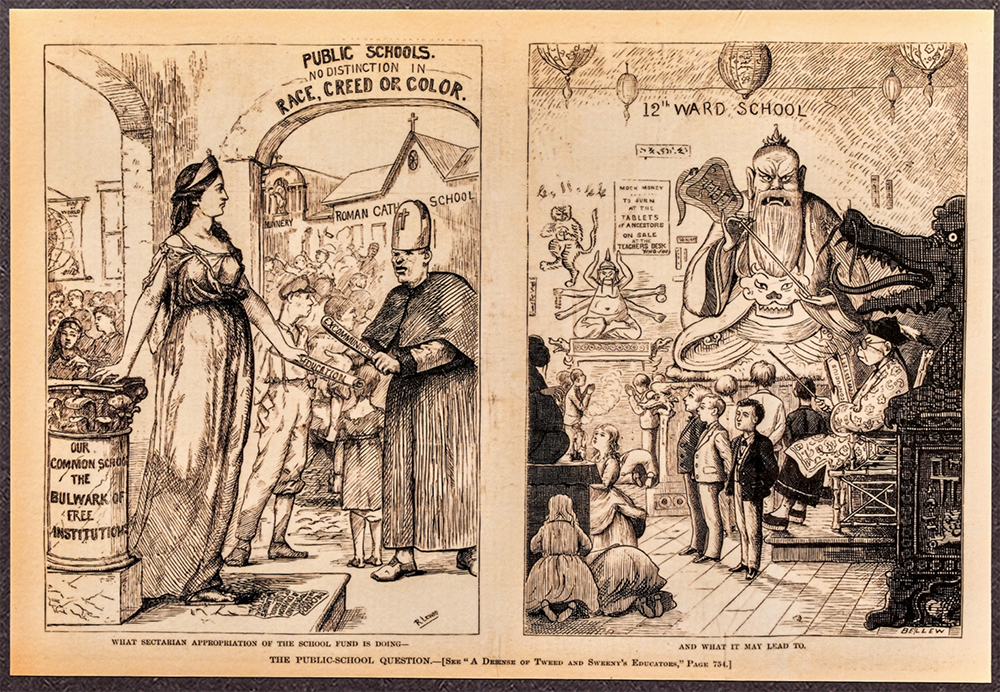
"What Sectarian Appropriation is Doing … And What It
May Lead To,” Harper’s Weekly, 1873
Patricia D. Klingenstein Library, New-York
Historical Society
Pressing Debate
With this biting political
commentary, Harper’s Weekly newspaper
dove into the strident debate over public funding for sectarian schools (whose
religious teachings privilege a specific group or theology).
The cartoon argues against
giving Catholics a portion of school funds for the operation of separate
religious schools. It warns that in addition to threatening American freedom,
such funding would set a dangerous precedent by
someday subsidizing other religious schools the public might find even more
objectionable.
Moral Improvement
Teaching Morality
America’s divergent religious
groups shared the belief that their own religion nurtured morality. Many thus
reasoned that religion belonged in the classroom. Nebraskans explicitly connected
religion, morality, and schools in their 1875 state constitution:
“Religion, morality, and
knowledge being essential to good government, the Legislature shall pass
suitable laws to protect every religious denomination in the peaceable
enjoyment of its own mode of public worship, and to encourage schools and the
means of instruction.”
But in the exceptionally
diverse nation that western expansion helped create, whose moral teachings
would get priority? Who would decide whose teachings dominated? And if all
religion was removed from the classroom, could children still be taught to
distinguish right from wrong? Debate raged over these and other questions.
Lord’s Prayer Controversy
This handkerchief, with its
mix of moral and religious messages, may have been created for use in a
Protestant Sunday school. Though many Americans believed that moral instruction
rooted in Christianity should also be included in public schools, doing so in a
religiously heterogeneous society presented difficulties. In many places it led
to ongoing skirmishes.
The
Lord’s Prayer aroused particular animosity in San Francisco, whose schools
served Protestant, Catholic, and Jewish children. The Protestant version of the prayer had
once been mandated in city schools. Over the years, its declining use aroused
both cheers and bitter denouncements. In 1875, the Lord's
Prayer was banished as a sectarian violation of school regulations.
Sunday Lessons No. 1, 1850–55
New-York Historical Society, Purchased from Elie
Nadelman, 1937.604
Industrial Arts
Christian Citizens
Indian boarding schools
explicitly aimed to Christianize Native children. Some institutions, like the
Ramona School for Indian Girls, were founded by Christian organizations under
contract with the US government. Others were run directly by the government as
Christian enterprises.
Few non-Native people
considered Indigenous beliefs to be religions or worried about the US
government imposing Christianity on Native children.
With most Native peoples now
forced onto reservations, government agents could compel or coerce families to
part with their children for years. Parental consent was not required.
Boarding school experiences
varied, but conditions were often harsh and could be deadly. Instruction in
Christianity, industrial training, and labor did the “civilizing work” that
supporters believed would assimilate Native children into white society.
Native families went to great
lengths to stay connected to children attending boarding schools. This photo
documents Cheyenne parents camping near the Cantonment Boarding School in
defiance of government aims to separate the children from their communities.
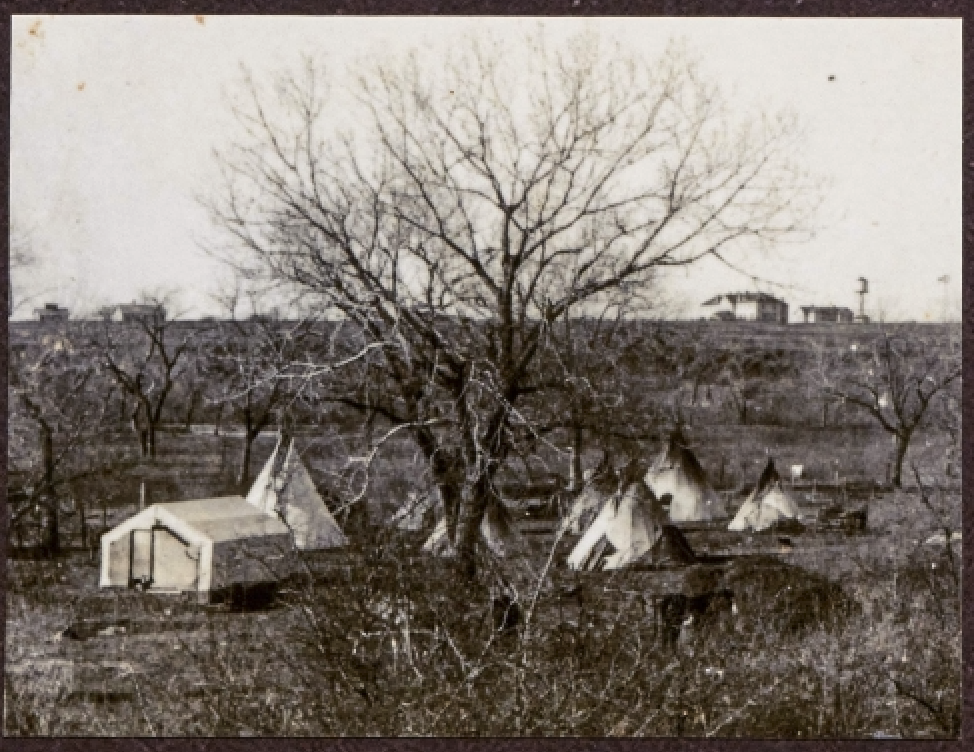
Tipis
in field at Cantonment Oklahoma Indian Boarding School, 1899–1900
Denver
Museum of Nature & Science, BR61-369
“In Eastern towns, it is hard
for educators to induce parents to walk a distance of two or three blocks to
visit their children in school. The Apache Indian will ride on horseback one
hundred and eighty miles, two or three times during the school term, to see how
his children are progressing; while the Pueblo will walk thirty or forty miles
for the same purpose.”
—Excerpt
from Ramona School for Indian Girls, 1886
These before and after photos
advertised the Ramona School’s work to “civilize” Native children entrusted to
its care.
Such images helped schools like Ramona solicit funds and support.
Apache Girls on Arrival at the Ramona School, Santa
Fe, N.M.” and “Apache Girls Six Days after Arrival at the Ramona School,” in The Ramona School for Indian Girls: Santa
Fe, N.M., 1886
Patricia D. Klingenstein Library, New-York
Historical Society

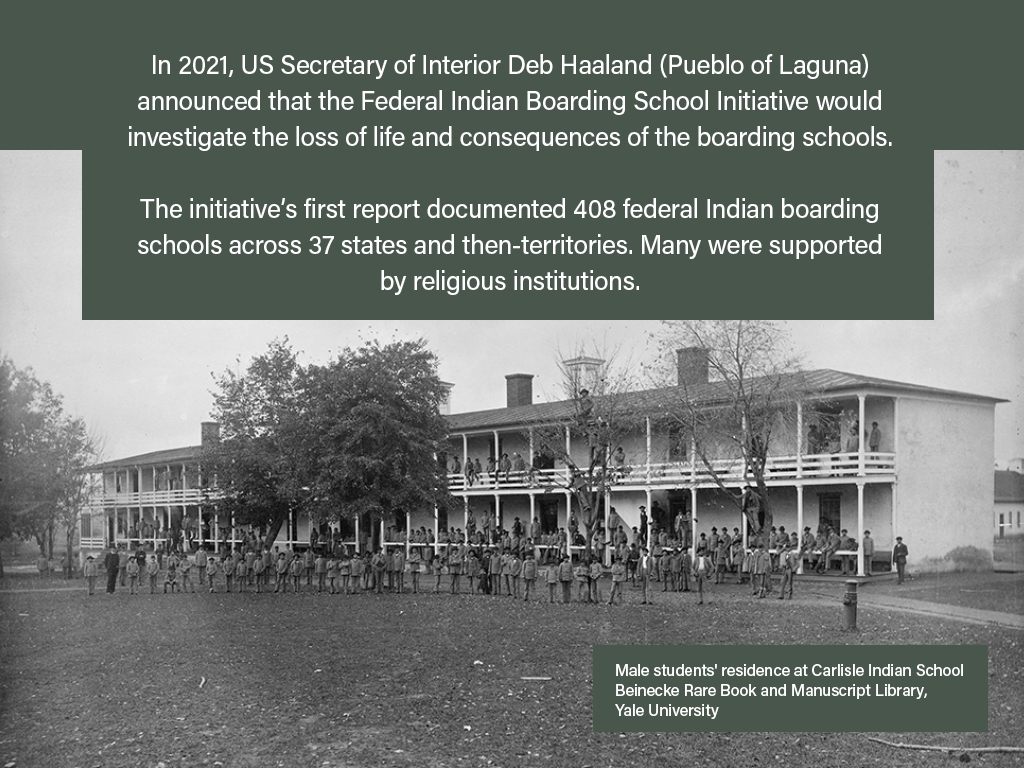

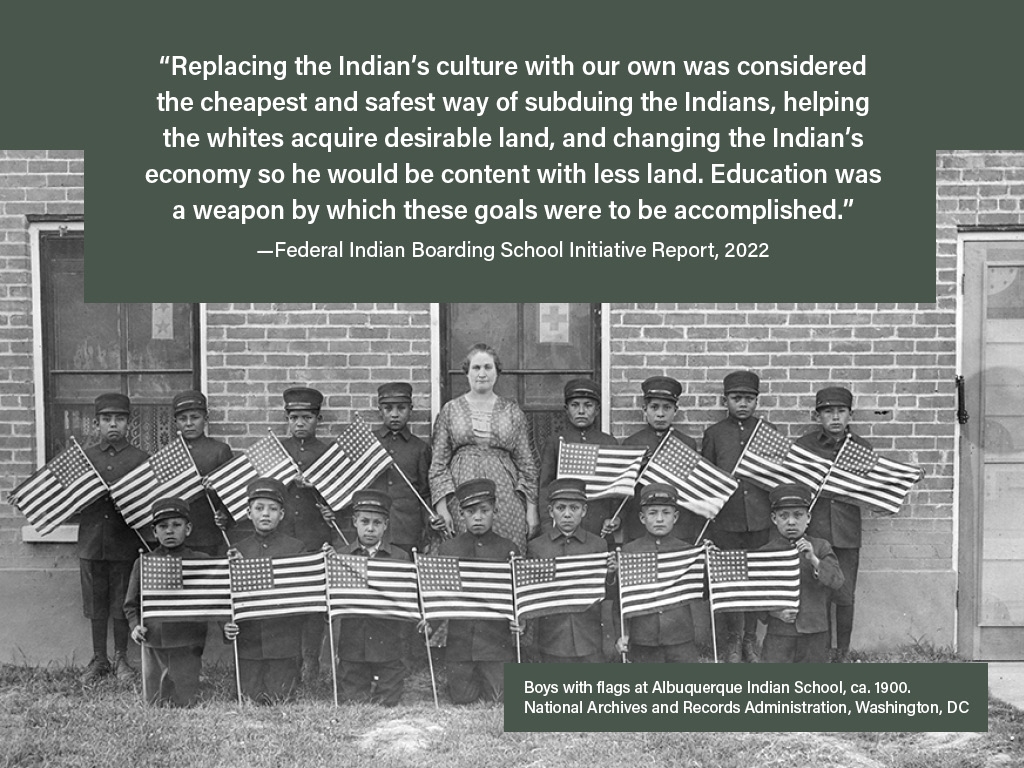
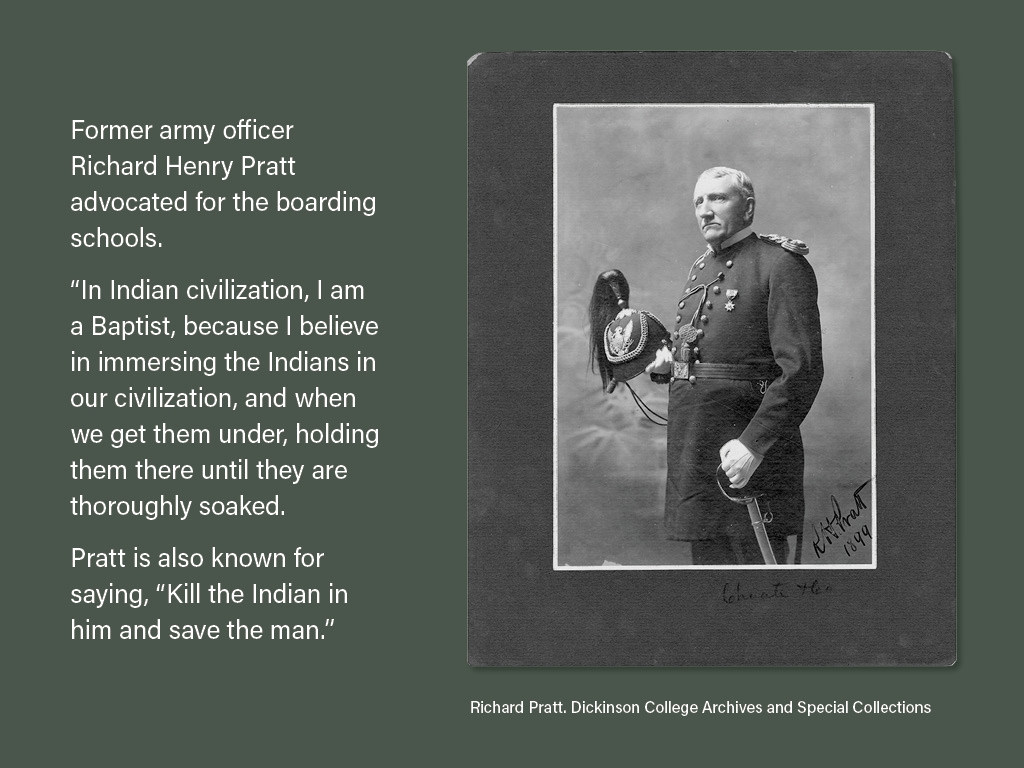
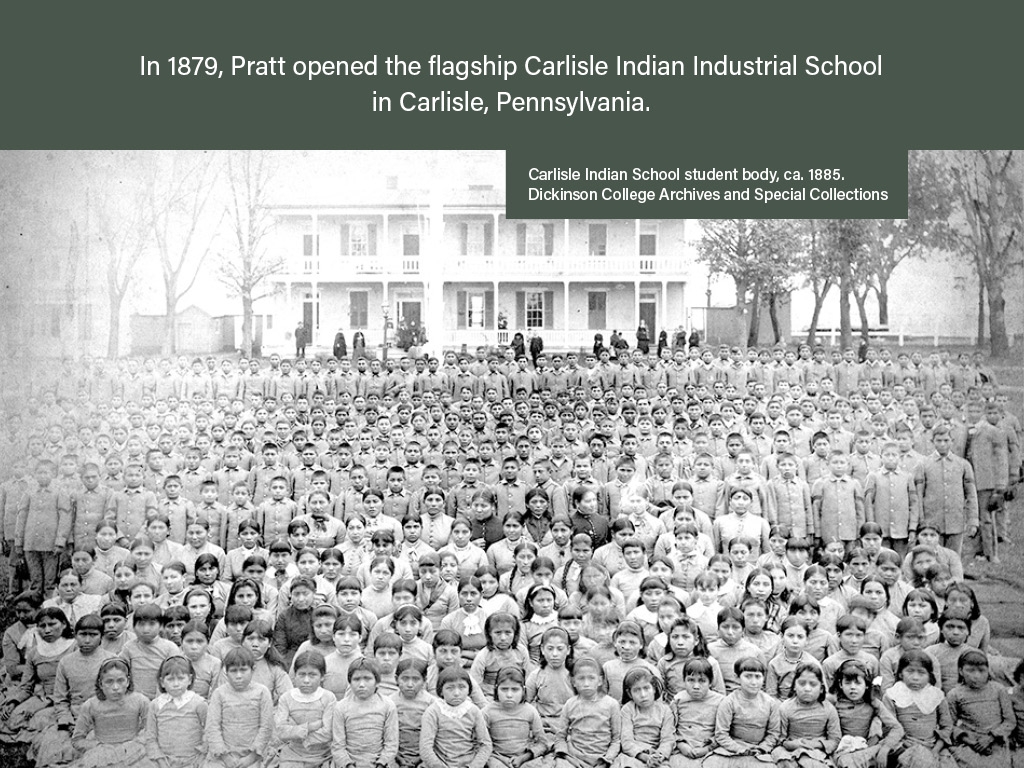

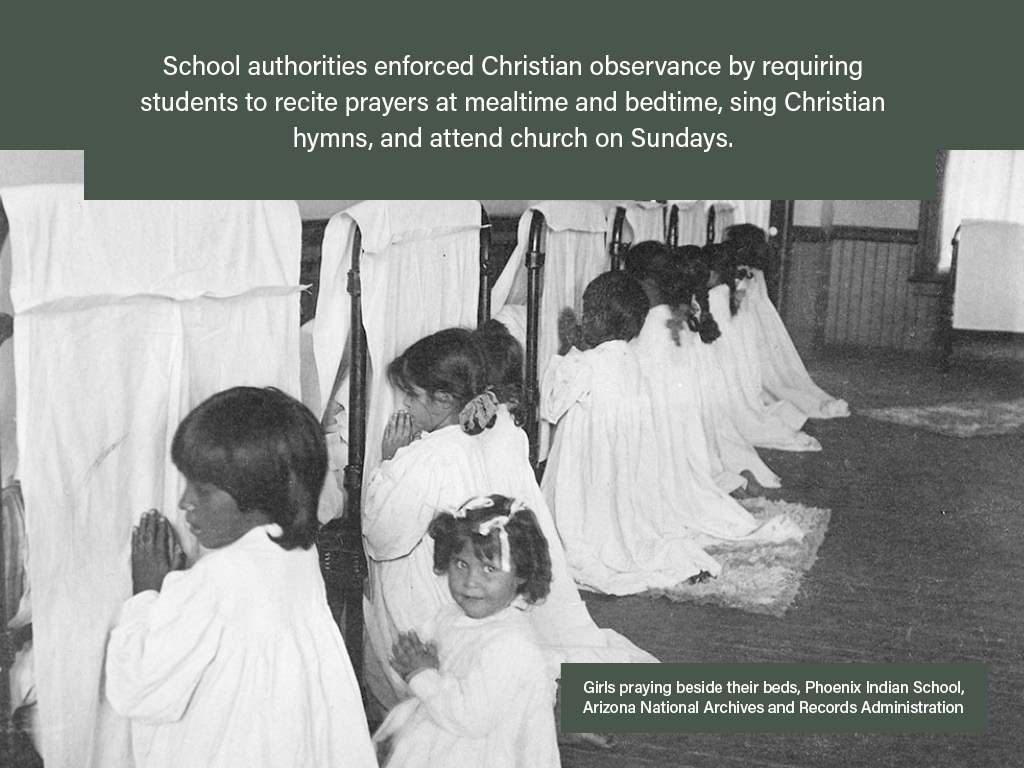

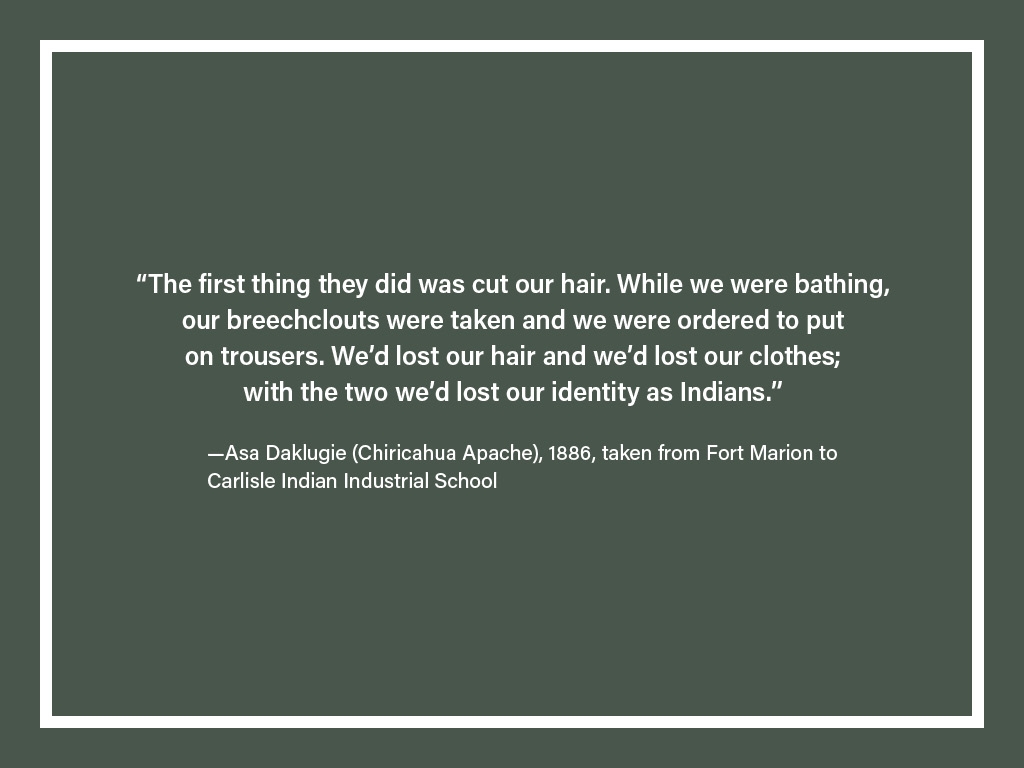
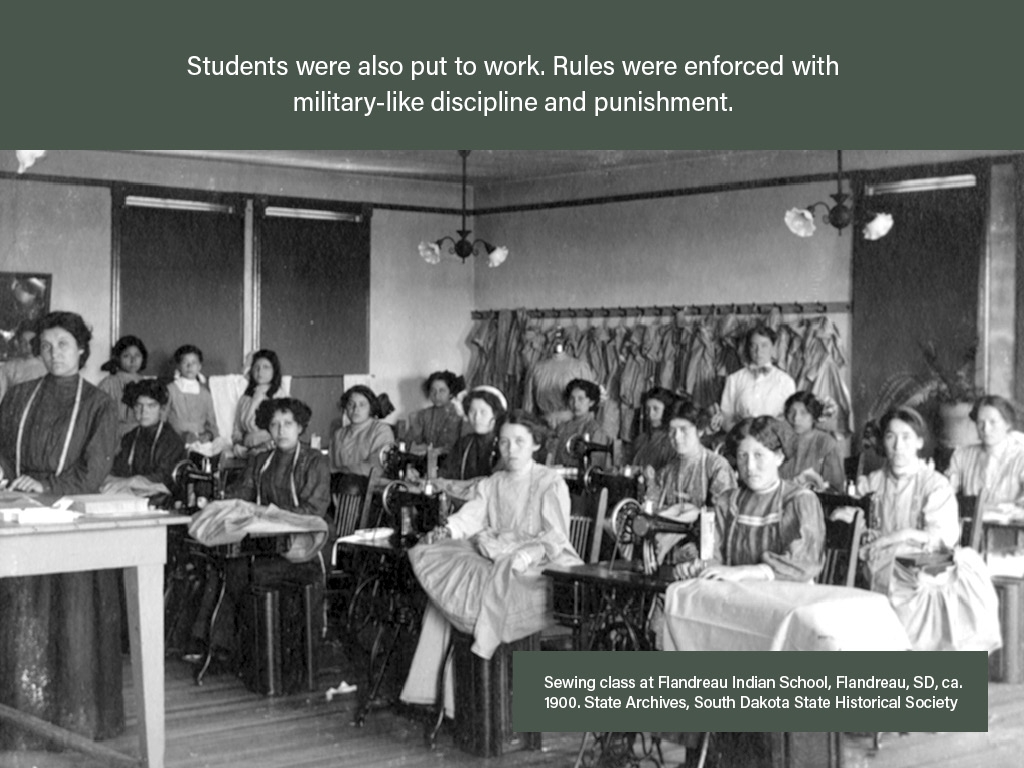


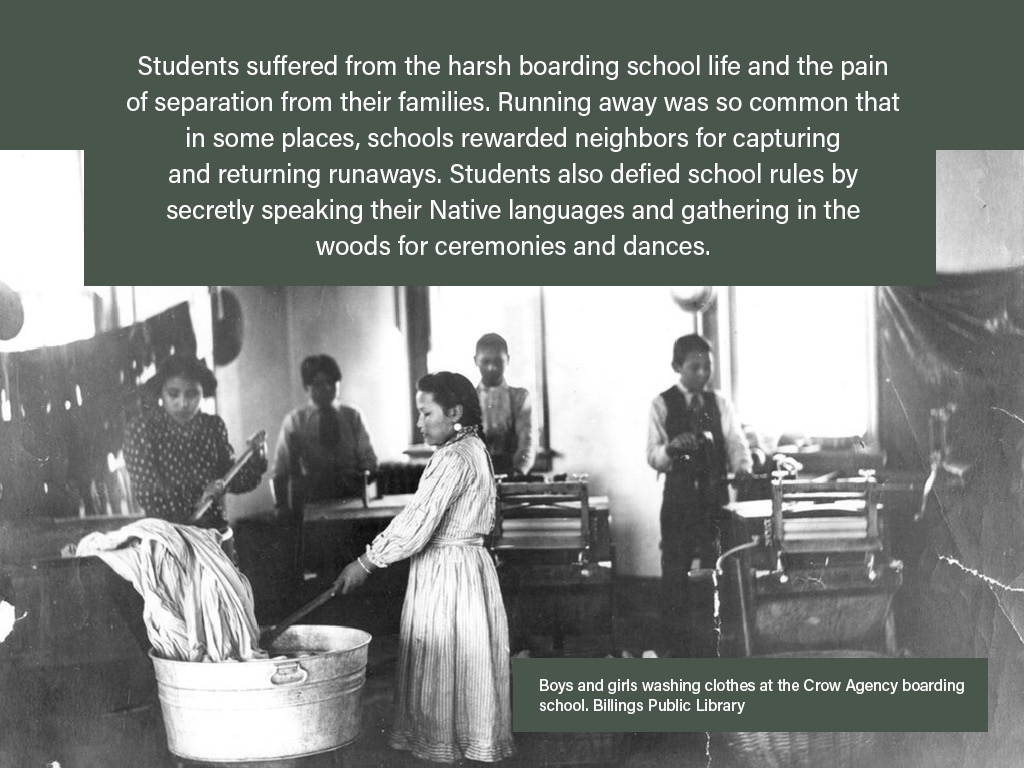
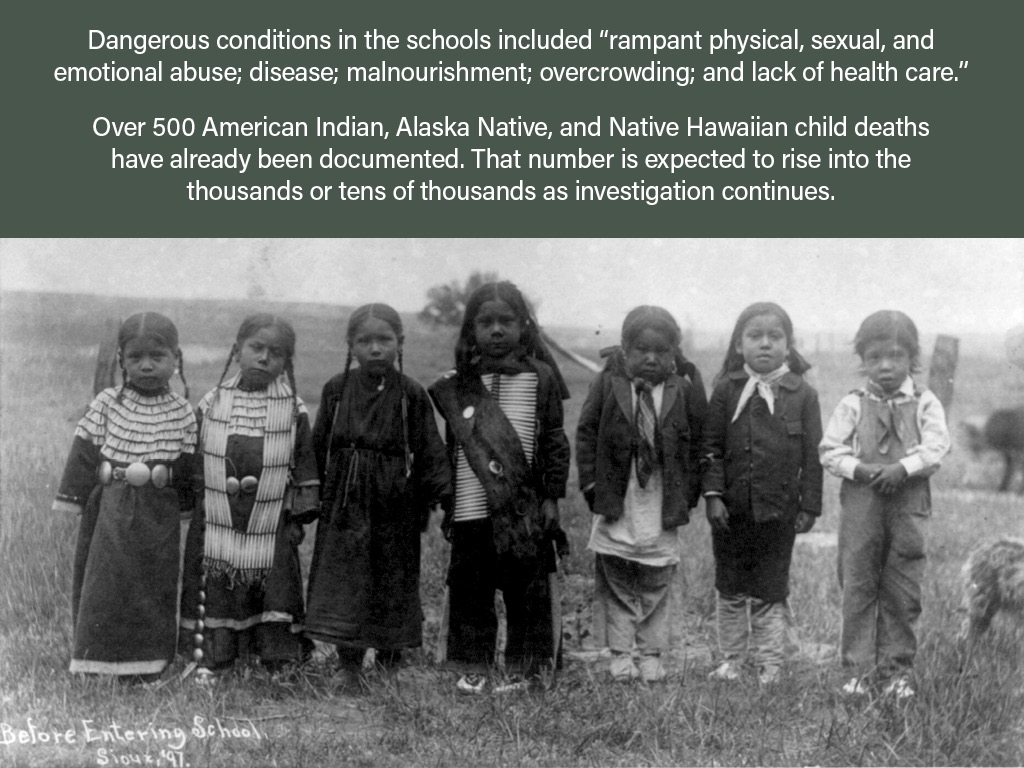
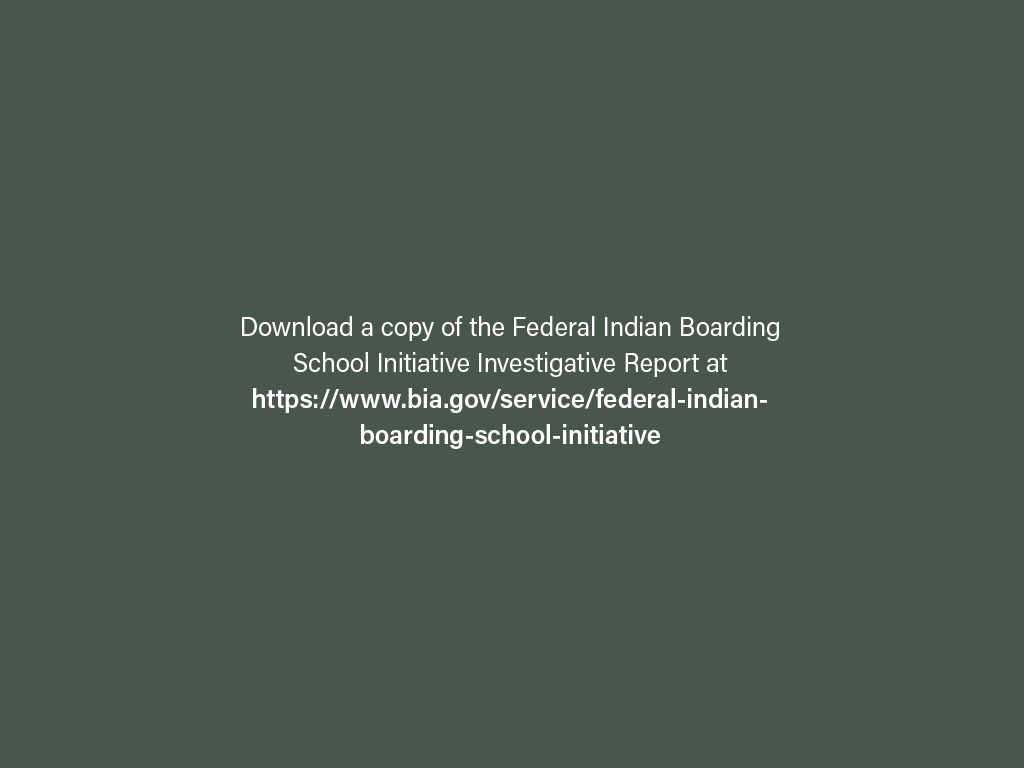
Religion
School Choice
Catholic Church officials and
parents wearied of their struggles over religion in the schools. They had
fought to make public school curricula more welcoming to Catholics. They had
campaigned for a share of public funds to operate Catholic schools. Yet despite
their growing numbers, these aims remained largely out of reach.
In 1875, the Church took a
firm stance against the public schools. The Vatican declared that sending
American Catholic children to public schools would result in "evils of the
gravest kind." US Catholic bishops were directed to “spare no pains” in
improving and increasing the number of Catholic schools. They were to impress
upon the faithful the importance of enrolling their children and the necessity
of paying tuition (in addition to public school taxes).
The eventual growth of a
separate parochial school system depended largely on the labor of religious
sisters. By 1900, more than 40,000 nuns worked in parish schools.
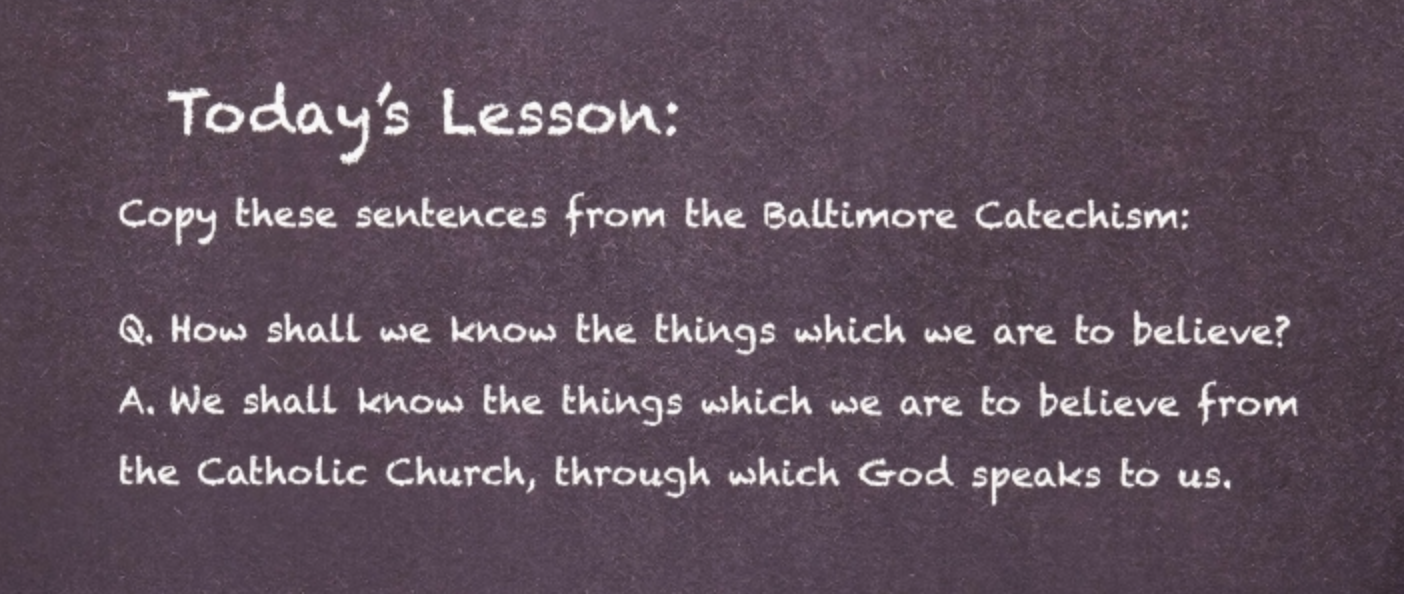

“Jesus Crucified” lesson board
Patricia D. Klingenstein Library, New-York
Historical Society
Reading
Religious Liberty
In religiously diverse Cincinnati,
Ohio, city leaders considered their schools to be non-sectarian because they
assigned readings in the King James Bible without accompanying instruction.
Competing Protestant denominations were satisfied but not Catholics, who
preferred the Douay-Rheims Bible and
believed that biblical interpretation should be guided by the Church.
Jews and free-thinkers preferred no Bible
reading at all in school.
In 1869, Cincinnati’s school
board voted to stop all classroom Bible reading as a way to appease dissenting
parties. Some parents were relieved because their children would no longer be
instructed in religions or theologies not practiced at home. Others criticized
the compromise, arguing that it entirely removed religion from school.
A group of Protestant parents
sued to have Bible readings reinstated. They won in Cincinnati’s civil court.
The school board appealed. Ohio’s Supreme Court unanimously ruled for the
school board and reinstated the ban.
The justices determined that
Bible reading was a religious exercise and inconsistent with state constitutional
principles, even when conducted without comment and for the purpose of
instilling morality rather than religious devotion.
“Let
the state not only keep its own hands off religion, but let it also see to it
that religious sects keep their hands off each other.”
—Minor v. Board of Education (1873)
The court’s decision in the "Cincinnati
Bible War" was an important 19th-century step toward religious neutrality
in public education. But Bible
reading remained widespread in public schools well into the 20th century.
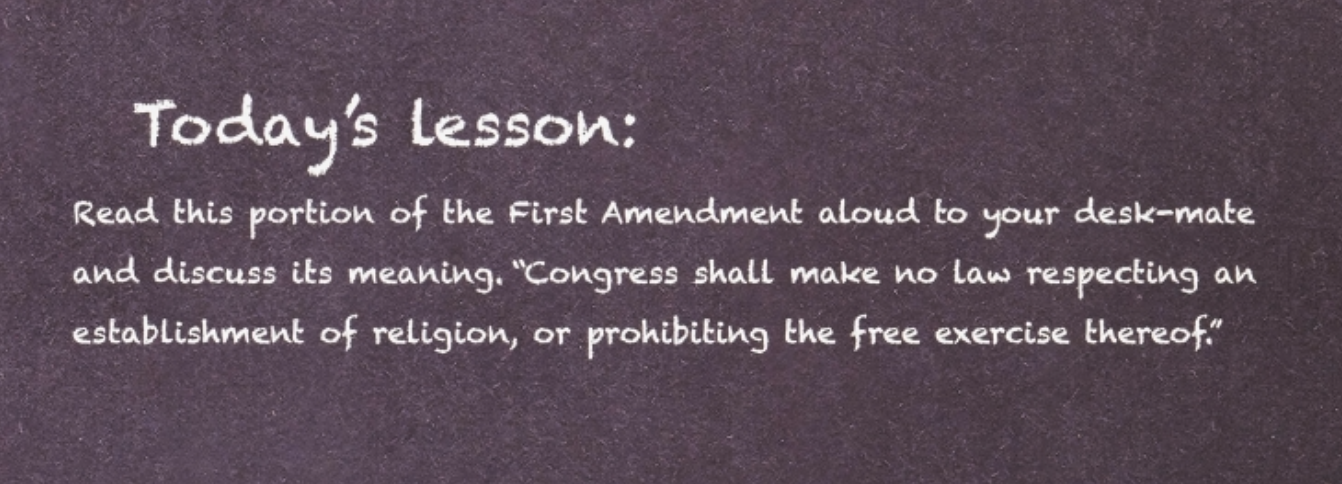
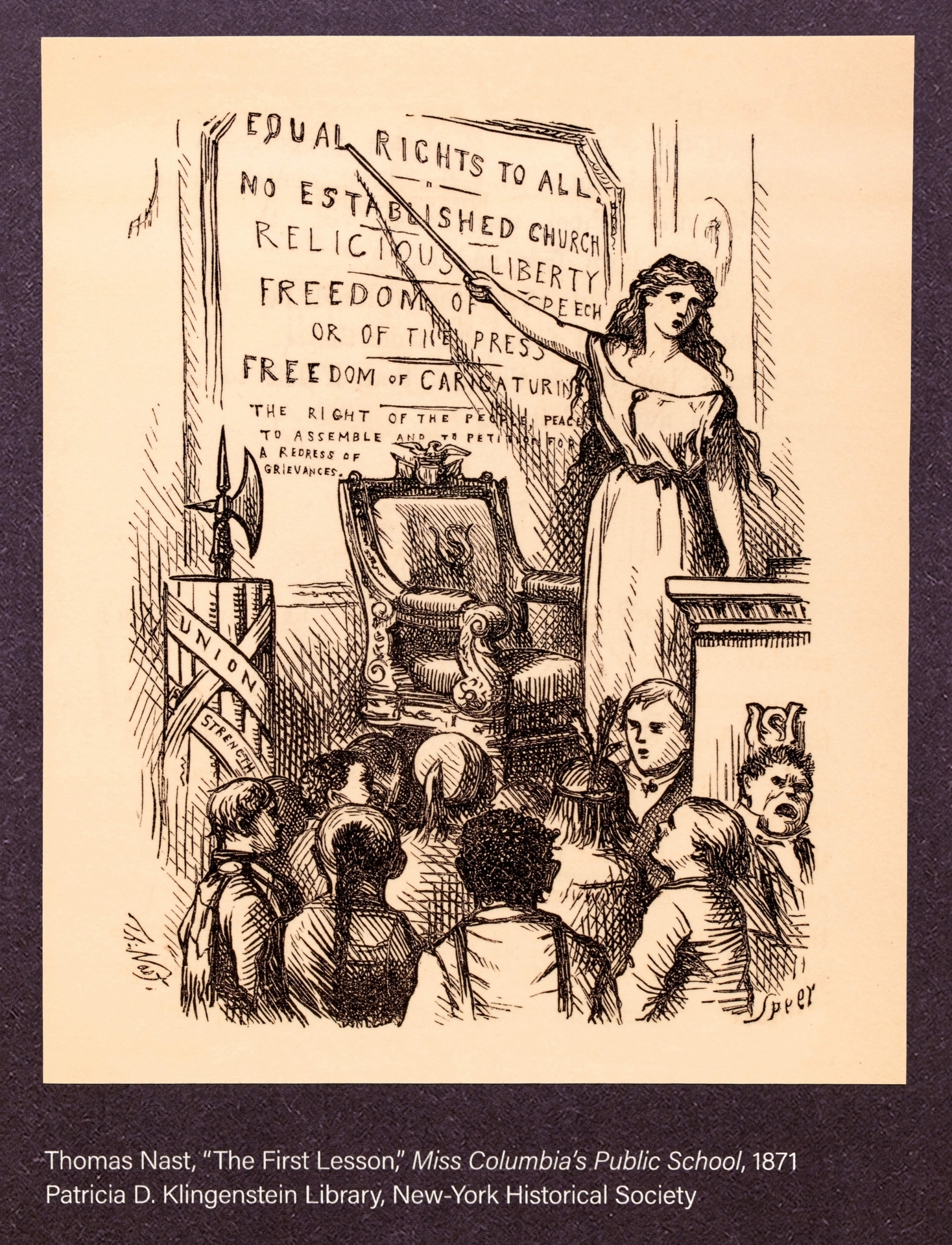
Doctrinal Differences
The King James Bible and the Douay-Rheims
Bible are two different versions of English language Christian Bibles from the
17th century. Protestants have historically favored the King James Version;
Catholics, the Douay-Rheims.
Unlike the Jewish Torah seen
earlier, both versions include the
New Testament, which Judaism does not recognize as a foundational text.